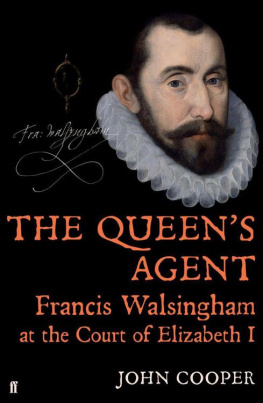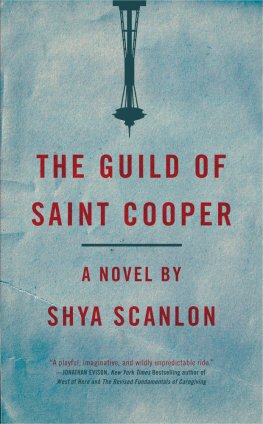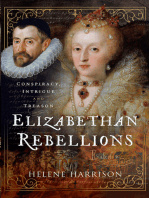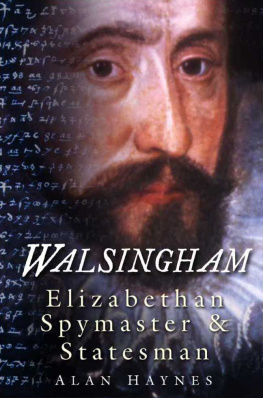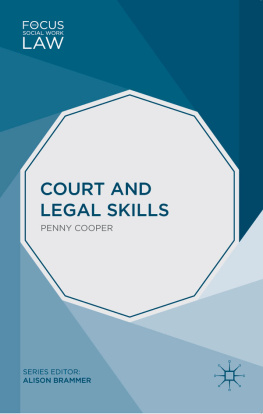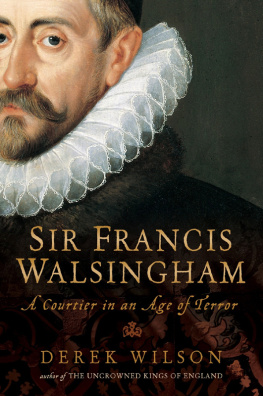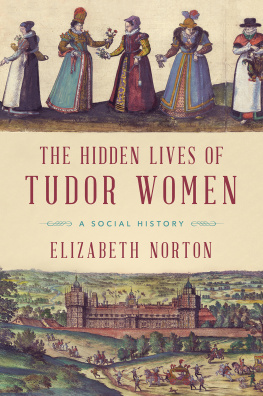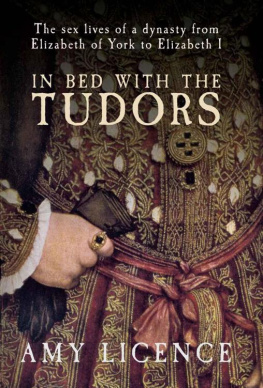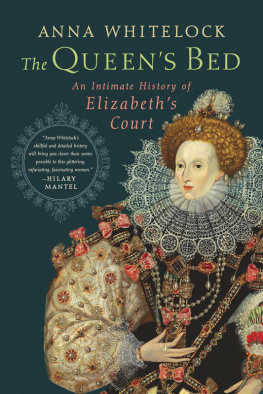John Cooper - Queens Agent: Francis Walsingham at the Court of Elizabeth I
Here you can read online John Cooper - Queens Agent: Francis Walsingham at the Court of Elizabeth I full text of the book (entire story) in english for free. Download pdf and epub, get meaning, cover and reviews about this ebook. year: 2011, publisher: Faber & Faber, genre: Art. Description of the work, (preface) as well as reviews are available. Best literature library LitArk.com created for fans of good reading and offers a wide selection of genres:
Romance novel
Science fiction
Adventure
Detective
Science
History
Home and family
Prose
Art
Politics
Computer
Non-fiction
Religion
Business
Children
Humor
Choose a favorite category and find really read worthwhile books. Enjoy immersion in the world of imagination, feel the emotions of the characters or learn something new for yourself, make an fascinating discovery.
- Book:Queens Agent: Francis Walsingham at the Court of Elizabeth I
- Author:
- Publisher:Faber & Faber
- Genre:
- Year:2011
- Rating:3 / 5
- Favourites:Add to favourites
- Your mark:
- 60
- 1
- 2
- 3
- 4
- 5
Queens Agent: Francis Walsingham at the Court of Elizabeth I: summary, description and annotation
We offer to read an annotation, description, summary or preface (depends on what the author of the book "Queens Agent: Francis Walsingham at the Court of Elizabeth I" wrote himself). If you haven't found the necessary information about the book — write in the comments, we will try to find it.
Queens Agent: Francis Walsingham at the Court of Elizabeth I — read online for free the complete book (whole text) full work
Below is the text of the book, divided by pages. System saving the place of the last page read, allows you to conveniently read the book "Queens Agent: Francis Walsingham at the Court of Elizabeth I" online for free, without having to search again every time where you left off. Put a bookmark, and you can go to the page where you finished reading at any time.
Font size:
Interval:
Bookmark:
Francis Walsingham at the Court
of Elizabeth I
JOHN COOPER

For my father


| BL | British Library |
| NPG | National Portrait Gallery, London |
| TNA | The National Archives, Kew |
| APC | Acts of the Privy Council of England , ed. J. R. Dasent et al. (London, 18901964) |
| CSP Dom. | Calendar of State Papers, Domestic Series, of the Reigns of Edward VI, Mary, Elizabeth , ed. R. Lemon et al. (London, 185671) |
| CSP For. | Calendar of State Papers, Foreign Series, of the Reign of Elizabeth , ed. J. Stevenson et al. (London, 18631950) |
| CSP Scot. | Calendar of State Papers relating to Scotland, and Mary, Queen of Scots , ed. J. Bain et al. (Edinburgh, 18981969) |
| CSP Ven. | Calendar of State Papers and Manuscripts, relating to English Affairs, existing in the Archives and Collections of Venice , ed. Rawdon Brown et al. (London, 18641947) |
| HMC | Historical Manuscripts Commission |
| STC | A Short-Title Catalogue of Books 14751640 , ed. W. A. Jackson, F. S. Ferguson and Katharine F. Pantzer (London, 198691) |
| VCH | Victoria County History of England |
| EHR | English Historical Review |
| ELH | English Literary History |
| HJ | Historical Journal |
| HLQ | Huntington Library Quarterly |
| JEH | Journal of Ecclesiastical History |
| PP | Past and Present |
| SCJ0 | Sixteenth Century Journal |
| TRHS | Transactions of the Royal Historical Society |
| WMQ | William and Mary Quarterly |

England and Ireland in the Sixteenth Century

On the feast day of St Bartholomew 1572, a marked man picked his way through the streets of Paris towards the residence of the English ambassador. The Sieur de Briquemault had just seen his sons murdered in front of him, two victims among the thousands of Protestants who were being cut down by their Catholic neighbours. His own survival now depended on reaching Francis Walsingham without being recognised. The road to the suburb of Saint Marceau was well known to Briquemault, who had visited the English embassy several times since Walsinghams arrival in January 1571. But informants were on the lookout for Protestant Huguenots fleeing the mob justice which had taken hold of the city. Carrying a side of mutton on each shoulder, the aristocratic Briquemault tried to lose himself among the porters and carters who worked the medieval streets of Paris. When he stumbled and fell at the city gate, friendly hands helped him up and hoisted the meat onto his back. The French guards watching for any trouble outside the embassy had no interest in a delivery man, and Briquemault made it inside.
Walsingham could have refused to help the Sieur de Briquemault. As English subjects and Protestant heretics, the ambassador and his staff were already under threat from the Catholic crowd rampaging through the city. Briquemault had been close to the Huguenot leader Admiral Coligny, whose murder on the kings orders had unleashed the torrent of violence pouring through Paris and provincial France. Giving asylum to such a prominent fugitive could threaten the lives of
The incident passes unnoticed in the traditional version of Walsinghams career, yet it says a lot about the courage of the man who served Queen Elizabeth as ambassador, principal secretary and chief of security. His efforts to save a fellow Protestant from being slaughtered were recorded by Walsinghams agent Tomasso Sassetti, in one of the comparatively few coherent accounts of the St Bartholomews Day massacres. A reader of Machiavelli and a friend of the historian Lodovico Guicciardini, Captain Sassetti had volunteered for Elizabeths army in Ireland before Walsingham recruited him for his embryonic secret service. He took his place in a network of news and intelligence which would ultimately stretch from Constantinople to the new-found lands of Canada and Virginia. Francis Walsingham is justly famous as a spymaster, a pioneer in cryptography and an expert in turning his enemies into double agents paid by the state. Catholic plots against Elizabeth were allowed to run just long enough to expose the full extent of their support. Less familiar is Walsinghams role in Elizabethan foreign policy, his long struggle with the issue of the queens marriage and his promotion of English plantations in Ireland and America. His life in royal service saw him fighting other battles, against the canker of court faction as well as the illness which was gradually poisoning him. Where others would have crumpled under the burden of government, Walsingham stayed by Elizabeths side until the twin threats of the Queen of Scots and the Spanish Armada had been neutralised.
Walsingham often wielded power over the lives of others. The destruction of Mary Stuart has been attributed to him by both critics and admirers, though Walsingham exonerated himself of any blame: she had conspired to destroy his mistress, and consequently she deserved to die. The execution of Catholic missionary priests is harder to justify. Walsingham was responsible for protecting the queen from assassination, and he saw it as his duty to use every weapon in his arsenal. Imprisonment, torture and a state-sponsored campaign of intimidation were all employed to drive Catholics into conformity with the established Church of England. Walsinghams agents infiltrated the English Catholic community at home and in exile, tempting the radicals in their midst to break cover by standing up for what they believed.
Modern lawyers would condemn this as entrapment, but again Walsinghams conscience was clear. Hidden treason would always reveal itself in the end, just as a witch could never fully conceal the pact which she had made with the devil. England was engaged in a war; literally so in the Netherlands and on the oceans from the mid-1580s, but also in spiritual combat against the forces of the Antichrist, whether in the form of the pope or the Guise family or Philip II of Spain. The need to convince Elizabeth of this fact was Walsinghams most urgent priority during the two decades which he spent as her adviser and principal secretary. He presented himself to the world as the queens agent, carrying out her policies and protecting her from harm. The full picture may surprise anyone who thinks that Tudor England was governed solely by personal monarchy. Walsingham was loyal and true to Elizabeth, devoted his life to her service; but he also cajoled her, clashed with her, and ultimately authorised the beheading of Mary Stuart without her knowledge. Queen Elizabeth I believed that she was in command of the ship of state, but Francis Walsingham was often at the tiller.
Font size:
Interval:
Bookmark:
Similar books «Queens Agent: Francis Walsingham at the Court of Elizabeth I»
Look at similar books to Queens Agent: Francis Walsingham at the Court of Elizabeth I. We have selected literature similar in name and meaning in the hope of providing readers with more options to find new, interesting, not yet read works.
Discussion, reviews of the book Queens Agent: Francis Walsingham at the Court of Elizabeth I and just readers' own opinions. Leave your comments, write what you think about the work, its meaning or the main characters. Specify what exactly you liked and what you didn't like, and why you think so.

